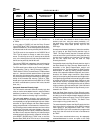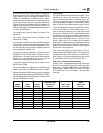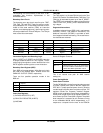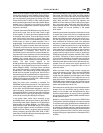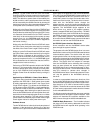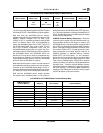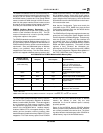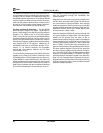
AMD
P R E L I M I N A R Y
62
Am79C930
Am79C930 Device PCMCIA Mode Attribute Memory Restricted Space
PCMCIA Address
in Attribute Memory SIR1[5:3] Size of Restricted Space Physical Memory and Description of Reserved Use
7FE0h – 7FFFh 111 32 bytes of Attribute Flash Memory 1 FFF0h – 1 FFFFh
memory, 16 bytes of actual These 16 bytes of Flash memory space are reserved
Flash memory space because they are the location of the embedded 80188
core’s instruction pointer following a Am79C930 device
reset operation. These 16 bytes must contain the first 80188
instructions.
PCMCIA I/O Resources — The Am79C930 device oc-
cupies either 16 or 40 bytes of I/O space, depending
upon the setting of the EIOW bit (bit 2 of the BSS register
(SIR1)). The I/O space of the Am79C930 contains the
General Configuration Register, the Bank Switching Se-
lect Register, and the set of 32 TIR registers. Addition-
ally, all Am79C930 resources are accessible through
I/O accesses, i.e., all
memory
structures are accessible
through the Local Memory Address and I/O Data
Ports (SIR2,3,4,5,6,7).
The Local Memory Address port plus SIR1[5:3] function
together as a pointer to the memory resources of the
Am79C930 device. SIR1[5] determines the device
selected (SRAM or Flash), and SIR1[4:3] and
LMA[14:0] supply the address to the selected device
whenever the I/O Data Port is read or written. Whenever
any of the I/O Data Ports is accessed, then the Local
Memory Address Port value is automatically incre-
mented by a value of “1.”
Note that the Am79C930 device always decodes the
lowest 6 bits of address when an I/O access is per-
formed with the Am79C930 device’s CE1 signal active.
This means that there is aliasing of addresses in I/O
space. This decode function is unaffected by the setting
of the SIR1[2:0] register bits.



